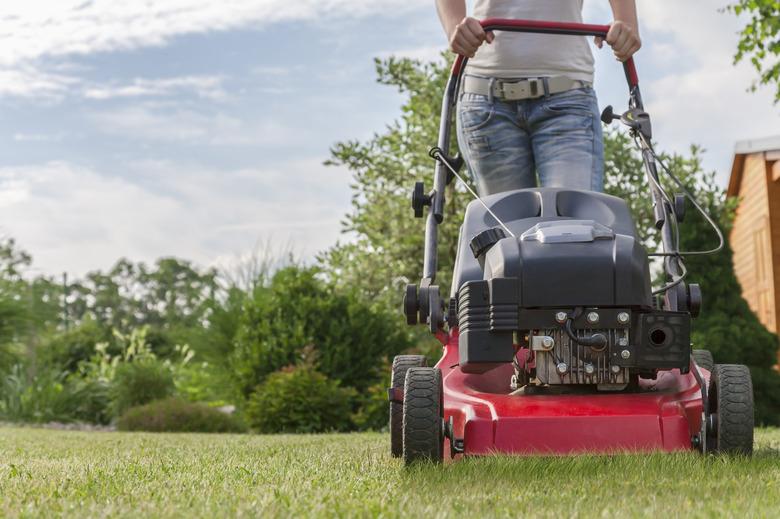Why Does My Lawn Get Yellow After Every Mow?
Mowing is an integral part of lawn maintenance, regardless of whether the grass is a warm-season or cool-season species. For green grass, you'll need soil that contains sufficient nitrogen plus ample moisture. If the lawn looks yellow-green after the weekly mowing, you probably need to change your maintenance practices.
Understand Grass Growth
Lawn grasses grow from thick, coarse, lower-stem shafts called sheaths. The sheath often looks tan or yellow in color. From the sheath arises the green leaf blade. Mowing the lawn cuts off the top of the leaf blade, often the greenest part.
Remember that a grass blade does not grow from the tip. Rather, it gets longer as it pushes out from the top of the sheath. The more leaf blade present, the greener the grass plant looks.
Regulate Mowing Height
It is important to regulate the height at which the mower cuts your grass. It should never cut into the sheaths in the lower portion of grass. Proper mowing height prevents mowing too much green leaf blade away and exposing the yellowy sheaths.
A simple rule of thumb is to never cut off more than one-third of the total grass height during mowing. Cutting off too much leaf blade leads to yellowing of the lower leaf blade. For example, if you want a lawn that is 3 inches tall after mowing, mow it when the lawn reaches no more than 4 inches tall. If the lawn happens to grow out of control and get taller, do not chop down the lawn very low to save time, as it exposes the sheath and removes most if not all of the green portions of the leaf blades.
Mow Lawns Regularly
Waiting too long to mow lawns often leads to large amounts of grass clippings that settle on the lawn. Small amounts of shredded clippings are beneficial to lawns. These clippings decompose and provide nitrogen to the roots in a thin thatch layer.
Infrequent mowing often means that taller grass tips are cut off. This adds to the buildup of thatch on lawns, especially on Bermuda grass, fescue, and bluegrass lawns. The thatch turns a beige or yellow and it shades the grass plant's sheath and lower leaf blade. Exposing thatch makes a lawn look yellow — again, the result of mowing too short or waiting too long between mowings.
Watch for Sunscald or Low Nitrogen
If a lawn looks peaked and yellow after mowing, it could also be caused by dry soil or sunscald. The green leaf blades photosynthesize light and shade the soil and lower portion of the grass plants. Cutting off the blades can expose lower, less-green portions of the leaf blade and sheath, resulting in some wilting and yellowing.
Soil low in nitrogen may also cause parts of the grass to look less green than normal. This could be the result of inadequate fertilizer. Consider applying a nitrogen-rich fertilizer if the grass looks yellow.
